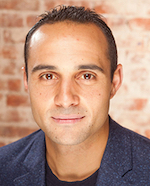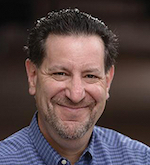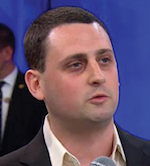The U.S. cannabis industry has gone mainstream. Advancements in disease management, recent legalization measures for recreational marijuana use in more than a half-dozen states and fading social mores have allowed a counterculture keystone to play the center role behind some of the most anticipated IPOs to come out of the tech and health sector in recent years.
Legal cannabis sales were a $7 billion market last year, with the medical cannabis industry alone accounting for more than $4 billion. Combined sales in the industry are poised to amass as much as $20 billion within the next five years.
|
|
Investors, private equity funds, consultants and startups representing every point in the cannabis ecosystem have since surfaced to align this burgeoning industry with its growing demand, be it in vaporizer manufacturers, extracts or edibles, cannabis-specific media companies or med-tech startups doing research that could lead to new types of treatments for a variety of illnesses.
Some analysts now believe this “green rush” has the potential to rival the dot-com era in terms of investment and innovation, and as cannabis’ business impact and consumer demand surge on a national stage, the communications world has taken note.
PR shops across the country have now lined up to service virtually every vertical in the cannabis sector, offering everything from branding and strategy to research to tried-and-true earned media programs that aim to share cannabis companies’ stories with consumers. Some PR agencies have now even opened their own cannabis-specific service divisions; others have sprung up entirely for the purpose of representing industry leaders in this new frontier.
PR services run the gamut
New York-based PR shop North 6th Agency in January announced that it had formed a new division dedicated entirely to servicing clients in the legal cannabis industry. The firm, which now serves as agency of record for numerous cannabis companies including Canopy, Green Flower Media, Jetty Extracts, Poseidon Asset Management, Surna, Tradiv, VapeXhale and Wurk, has been representing cannabis clients since states first began legalizing marijuana for recreational purposes.
N6A president and CEO Matt Rizzetta said his agency, which was founded in 2010, was introduced to the field “by chance” with the signing of a new account and has since doubled down and decided to scale its practice to create a new group dedicated to the industry. A director was recently promoted to head N6A’s cannabis division and the agency is now looking for account coordinators, executives and managers to fill out this practice.
 Matt Rizzetta Matt Rizzetta |
Rizzetta described today’s cannabis players as akin to classic startups, an industry in its incipience that may have only recently realized that a marketing plan is something they can’t afford not to have. Like many consumer brands, cannabis companies are seeking integrated communications programs to get their names into the marketplace, but Rizzetta said what many of these companies are now asking for often goes beyond earned media campaigns alone and encompasses everything from messaging, awards, speaking events and branding.
“The most interesting observation we’ve seen in cannabis is that clients need earned media first, but they’re also leaning on us a littler earlier for services beyond that. They want their brand to be put on the map from a national perspective, so they’ll need coverage and brand equity, but since they’re so early as a business they’ll also need help with branding, social media, design work. They need us as business advisors. There’s a demand for ancillary services at a much higher rate than clients in other industries.”
“This is an industry that was working in the shadows for years,” said Jonathan Bloom, CEO and founder of San Jose, CA-based tech and consumer agency McGrath/Power Public Relations.
McGrath/Power, which holds a range of clients in the B2B and B2C tech sectors, recently became agency of record for Richmond, CA-based medicinal cannabis extracts provider Constance Therapeutics, a leading manufacturer of therapeutic-grade cannabis oil, whose medicinal use is now widely recommended by physicians.
 Jonathan Bloom Jonathan Bloom |
Bloom said his agency, whose forays into the cannabis world remain limited to the medicinal side, entered the field through the California investment community, which for several years had been quietly flowing funds into cannabis startups in a bid to broaden brands in these spaces or create new ones. Bloom said what we’re now seeing in the cannabis world is similar to what happened during the beginnings of the dot-com era, where several key industries — applications, hardware, software — converged to contribute to a larger movement that ultimately changed how companies and people share information.
“When you’re dealing with people who haven’t worked in a standard business environment, you’ll see requests for services that run the gamut. It’s almost a one-to-one applicability to services we’d do for any standard client, but we’re applying it to people, products and services that have never been in the light before, and we’ve now counseled them on everything from product names to market segment targeting,” Bloom said.
Writing the cannabis PR playbook
Legal cannabis presents a new market for a centuries-old — though until recently, entirely illicit — product. A strategic conundrum exists here: how do you tackle communications duties for a movement where no script exists? Like any brand, Bloom said marketers ultimately have to walk consumers through the same classic buyer’s journey program that would be at play if a customer was looking to buy a pair of jeans or a new car.
“We always look at any client through the same lens up front: what are their goals, who are the people we need to influence and what desired action do we want them to take?” Bloom said. “Whether it’s cannabis or cloud software, you’re communicating with people so they’ll understand something and then do something. We’re not looking at consumers who want to catch a buzz. We’re looking at people who are looking for true alternatives to existing treatment and many have a clear understanding of what they’re looking for. They need to be educated and they need to be informed, and we have to create an educational information flow that shows them what’s possible, and we also have to be transparent and have a true conversation that introduces them to what is effectively becoming the new normal.”
It seems that, at least for the time being, it’s primarily the mid-sized and boutique PR agencies doing most of the work in these spaces. Agencies like N6A have been on the ground floor of a movement, and as a result, have been able to learn about the cannabis industry, invest in relationships and gain a foothold long before it went mainstream. This sort of leap is often not possible at a larger PR agency, where bureaucratic red tape may tie these sorts of ventures to the springboard.
“We’ve scaled our business so that we have our hands in different industries and can afford to take a chance and a little bit of a risk,” Rizzetta said. “We’re able to react quickly, and speed and expediency is key. If we’re going to beat the global agencies, we’re going to have to roll the dice.”
 Evan Nison Evan Nison |
One such agency is cannabis-specific PR shop NisonCo, which was founded three years ago by owner Evan Nison. Nison, who bills his company as a “socially driven public relations firm,” began his career in college as a marijuana legalization advocate before being hired as a pro bono lobbyist for a publicly traded cannabis company. He’s the youngest member on the board of directors for nonprofit lobbying organization NORML and also sits on the board for Students for Sensible Drug Policy.
“The cannabis industry is new. If you’ve been here for two or three years you’re a veteran,” Nison said.
NisonCo’s clients now include iconic cannabis publication High Times, as well as newer companies such as news platform CFN Media, cannabis aficionado social network MassRoots and Whoopi Goldberg’s medical cannabis company, Whoopi & Maya.
Nison, who eventually plans to branch out his shop to represent clients in the sustainability and impact investing sectors, said the most common complaint he currently hears from clients is that most PR agencies simply don’t yet understand the cannabis industry and its landscape.
“Marijuana is similar to many other industries in that there’s a need for a lot of ancillary services, but it’s different in basically every other regard because we have to be on top of what’s happening both at a state and federal level related to regulation or legalization,” Nison said. “Marketing is different in cannabis for many reasons, one being that you can’t just advertise many things on Facebook or Google.”
Those FDA guidelines, of course, establish clear parameters for the cannabis sector whose adherence is paramount.
“It’s one of the primary reasons why research is critical,” Bloom said. “You can’t make claims you can’t verify, and you have to work within FDA guidelines or you’re going to have a real problem. There have been times when we’ve had to walk our clients back more than encourage them to go forward in regard to what we’re willing to put our name on.”
Media is receptive
As cannabis use becomes accepted by a larger percentage of the population, it becomes a topic taken more seriously by the press. Some outlets now consider it a beat in any other respect, and several media outlets such as CNN, Business Insider and Forbes have now begun to assign dedicated reporters to cover the cannabis space.
“When we first started, cannabis was kind of wink, wink topic that wasn’t taken very seriously,” Bloom said. “The media has since become far more receptive, and now you’re seeing stories that are looking at everything from the business and medical impact of cannabis to the legislation stage. We’re starting to see the media’s thirst not only for medical impact but social and cultural as well.”
Rizzetta said the mainstream media covering cannabis also remains different in some ways from mainstream reporters covering other categories.
“We need to understand that when we’re dealing with national media, for the most part, it’s an education-first mindset. These reporters are still learning. They don’t know a lot of about the industry, and that’s an important distinction because as an agency you need to understand who you’re dealing with, and the media is meeting our clients from an educational perspective so they can learn the beat,” he said. “The reporters covering cannabis are also on looser deadlines. They don’t feel pressured to write the stories immediately. The same rules that apply to non-cannabis reporters don’t apply to beat reporters covering the cannabis space in the mainstream media.”
The type of media interested in cannabis is also changing. According to Nison, many of the trade and niche publications — everything from accounting publications and law enforcement publications — are beginning to write stories about the industry.
“A lot of the firsts are gone. What would be considered new or groundbreaking is dramatically different from when I started,” Nison said. “In 2014 we were pitching the story that a lot of ‘legitimate’ type people were leaving Wall Street and entering cannabis. That was considered groundbreaking then. Nowadays that’s not news; it’s just a smart thing to do.”



 Abandon traditional content plans focused on a linear buyer progression and instead embrace a consumer journey where no matter which direction they travel, they get what they need, stressed marketing pro Ashley Faus during O'Dwyer's webinar Apr. 2.
Abandon traditional content plans focused on a linear buyer progression and instead embrace a consumer journey where no matter which direction they travel, they get what they need, stressed marketing pro Ashley Faus during O'Dwyer's webinar Apr. 2. Freelance marketers and the companies that hire them are both satisfied with the current work arrangements they have and anticipate the volume of freelance opportunities to increase in the future, according to new data on the growing freelance marketing economy.
Freelance marketers and the companies that hire them are both satisfied with the current work arrangements they have and anticipate the volume of freelance opportunities to increase in the future, according to new data on the growing freelance marketing economy. Home Depot's new attempt to occupy two market positions at once will require careful positioning strategy and execution to make it work.
Home Depot's new attempt to occupy two market positions at once will require careful positioning strategy and execution to make it work. Verizon snags Peloton Interactive chief marketing officer Leslie Berland as its new CMO, effective Jan. 9. Berland succeeds Diego Scotti, who left Verizon earlier this year.
Verizon snags Peloton Interactive chief marketing officer Leslie Berland as its new CMO, effective Jan. 9. Berland succeeds Diego Scotti, who left Verizon earlier this year.  Norm de Greve, who has been CMO at CVS Health since 2015, is taking the top marketing job at General Motors, effective July 31.
Norm de Greve, who has been CMO at CVS Health since 2015, is taking the top marketing job at General Motors, effective July 31.


 Have a comment? Send it to
Have a comment? Send it to 
No comments have been submitted for this story yet.